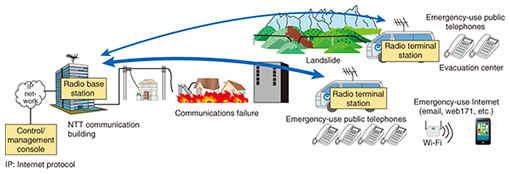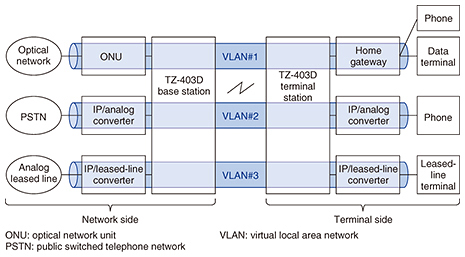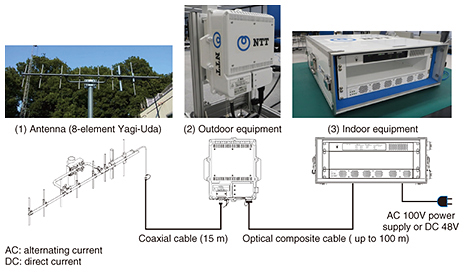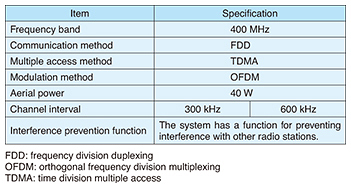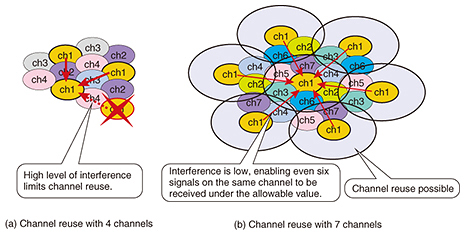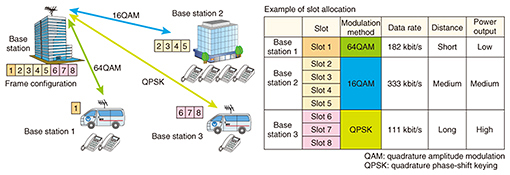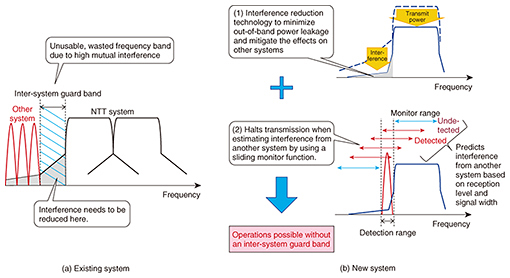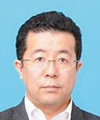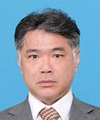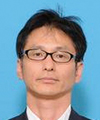 |
|
|
|
|
|
Feature Articles: Terrestrial Wireless Systems for Disaster Recovery to Provide Customer Relief Vol. 16, No. 1, pp. 52–58, Jan. 2018. https://doi.org/10.53829/ntr201801fa8 Wireless Access System for Disaster Recovery Providing Safety and Security to CustomersAbstractIn Japan, the frequent occurrence of various types of disasters since the Great East Japan Earthquake of 2011 has underscored the importance of having wireless systems available for use in disaster recovery. The existing wireless system, however, has several disadvantages, including the inability to effectively deal with data communications and to function in wide-area disasters. To remedy this situation, NTT has developed and implemented a wireless access system for disaster recovery (TZ-403D) that features digital operations and an increase in the number of simultaneously accommodated terminals. The system also achieves improved portability through a compact and lightweight configuration, and it provides greater safety and operability due to an anti-dropping mechanism for small parts, the use of fewer cables, and assembly requiring only one type of tool. Keywords: disaster recovery, wireless access system, wide-area disaster response 1. IntroductionThe NTT Group places great importance on constructing a communication network that is robust against disasters and establishing a means of early restoration of communication functions if they are disrupted. Here, radio communication technology plays a vital role in prompt restoration of communication functions from the viewpoint of equipment portability and high-reliability communications using frequency bands oriented to disaster recovery. However, aging facilities and the continued decrease in the number of personnel having specialized skills are driving the need for upgrading equipment and making operation and maintenance easier and more efficient. Various wireless access systems can be used for disaster recovery. A wireless system using the 400-MHz band has been deployed throughout Japan as a means of providing a telecommunications infrastructure as early as possible in the face of disasters. This is achieved by using a frequency band oriented to disaster recovery, leveraging the capability of radio communications having a range of several dozen kilometers, and providing a wireless connection between a radio base station and a radio terminal station installed at an evacuation center or elsewhere. Nevertheless, in the aftermath of the Great East Japan Earthquake, although email and social networking services using smartphones, tablets, or other compact information terminals proved to be effective communication tools, various problems occurred with existing analog equipment such as a difficulty in providing Internet connection functions. In this regard, it has been predicted that a wide-area disaster will occur in the event of a Nankai megathrust earthquake, or an earthquake striking directly under the Tokyo metropolitan area, so the establishment of many evacuation centers over a wide area can be envisioned. Existing equipment, however, can only handle a few channels at one time, and one radio base station can only accommodate one radio terminal station, which makes it difficult to deal effectively with a wide-area disaster. Against this background, NTT has developed and implemented a 400-MHz-band wireless access system for disaster recovery (TZ-403D) that provides an Internet connection function in addition to emergency-use public telephones and improves portability and ease of operation and maintenance through a compact and lightweight configuration. The system is designed to operate in the event of wide-area disasters such as major earthquakes or tsunamis (tidal waves). 2. TZ-403D system configurationThe configuration of the TZ-403D system is shown in Fig. 1. In this system, one radio base station can accommodate multiple radio terminal stations, thereby achieving point-to-multipoint (P-MP) communications. In other words, the system can simultaneously accommodate multiple terminal stations installed in many evacuation centers at the time of a wide-area disaster. Various scenarios can be envisioned here; for example, radio base stations may be installed beforehand at NTT communication buildings in preparation for a disaster or readied for transport to NTT communication buildings near evacuation centers, and radio terminal stations may be mounted on disaster-recovery vehicles for quick transport to evacuation centers at the time of a disaster.
The TZ-403D system consists of Layer 2 transmission equipment. It can support a variety of services by changing the adapters connected to the network side and terminal side. The standard configuration of this equipment is shown in Fig. 2. For example, the network side and terminal side can be respectively connected to an optical network unit and home gateway to enable connection to an optical communications network and provision of Internet protocol (IP) phone (equivalent to NTT’s Hikari Denwa service) and Internet connection services. Alternatively, both the network side and terminal side can be connected to an IP/analog converter to enable connection to a conventional subscriber line switch, or both can be connected to an IP/leased-line converter to provide analog leased-line services. The TZ-403D system also incorporates multiple ports that can be kept independent by port-based virtual local area networks so that multiple connections can be simultaneously accommodated (restored).
3. Equipment appearance and main specificationsPhotographs of the equipment are shown in Fig. 3, and the main specifications are listed in Table 1. The radio base station equipment and radio terminal station equipment consist of an antenna, outdoor equipment, and indoor equipment. The antenna (1) connects to the outdoor equipment and transmits/receives radio signals; the outdoor equipment (2) performs high-frequency signal processing of transmit/receive radio signals, and the indoor equipment (3) performs modulation/demodulation baseband signal processing and IP data processing. For the sake of portability, the weight of each of these components has been kept low enough to allow for transport by two people. The total weight and volume has been reduced by about half in each case compared with existing equipment. Furthermore, for the sake of operability, all small parts such as assembly screws feature an anti-dropping mechanism, and only one type of tool is used for assembling the equipment, thereby simplifying the on-site work.
4. Technical featuresThe technologies used in the TZ-403D system support wide-area disaster relief. They consist of multichannel technology, long-range communications technology, P-MP communications technology, and frequency sharing technology. They are introduced in this section. 4.1 Multichannel technologyTransmission efficiency has been improved through digitization with the arrangement of more radio channels within limited frequency resources and enhanced spectrum efficiency. As a result, a narrowband system contracted by approximately 50% compared with the existing system has been achieved, and the number of simultaneously usable channels has been extended from four to seven. Four channels were used in the past, which often led to interference when there was not enough distance between radio equipment using the same radio channel. Consequently, the areas in which such channel reuse could be applied were limited (Fig. 4(a)). In contrast, the use of seven channels enables sufficient distance between radio equipment to be secured, thereby keeping interference within the allowable value and enabling the reuse of radio channels. In this way, multichannel technology enables the system to operate effectively in the event of a wide-area disaster (Fig. 4(b)).
4.2 Long-range communications technologyThe TZ-403D system can be used in a variety of propagation environments such as mountains, oceans, plains, and urban areas over communication distances from several kilometers to several tens of kilometers. For this reason, the system adopts orthogonal frequency division multiplexing as a modulation method that is robust against long-delay, multipath interference. In addition, adaptive modulation technology, which enables automatic selection of the modulation method and of the code rate of the error-correction code according to signal quality, establishes communications by lowering the data rate even for long distances. 4.3 P-MP communications technologyIn this system, the radio base station adopts time division multiple access to allocate slots divided along the time axis to individual radio terminal stations. This scheme establishes radio connections between the radio base station and multiple radio terminal stations. At this time, a separate data rate can be selected for each radio terminal station by using adaptive modulation technology, and communication speeds can be flexibly set by changing the number of slots allocated to each radio terminal station (Fig. 5). In addition, controlling the power output of each radio terminal station according to communication distance avoids the transmission of unnecessary signals, thereby reducing the amount of power consumed while suppressing interference that affects other radio equipment.
4.4 Frequency sharing technologyDeliberations held by the Information and Communications Council of the Ministry of Internal Affairs and Communications resulted in a ruling stating that a 400-MHz portable wireless system for disaster recovery is required to include a function for preventing interference with neighboring systems. The TZ-403D system is equipped with a sliding monitor function that can detect signals of a neighboring system with high accuracy even if the signal bandwidth of that system is unclear (Fig. 6). This enables operation without having to establish a guard band with the other system.
Additionally, to prevent interference with other base stations at the time equipment is set up in an emergency, the system is also equipped with a function for monitoring peripheral signal usage and automatically searching for and selecting an available radio channel. This eliminates the need for personnel in the field to survey available channels, which speeds up and simplifies operations so that special lines can be provided to evacuation centers as early as possible. 5. Related legislationThe TZ-403D system has been recognized as an effective countermeasure to wide-area disasters by the Information and Communications Council, which is made up of university professors, experts from related ministries and agencies, and representatives of telecom carriers. It was put into effect on April 27, 2016 as “radio facilities of a radio station in terrestrial mobile business operations using the 400 MHz frequency band” as stipulated in Chapter 4, Section 4.30 of the Ordinance Regulating Radio Equipment. |
|









